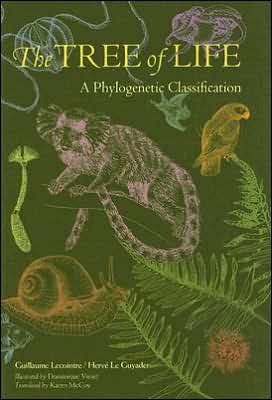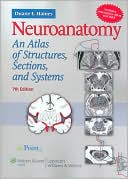The Tree of Life: A Phylogenetic Classification
Did you know that you are more closely related to a mushroom than to a daisy? That crocodiles are closer to birds than to lizards? That dinosaurs are still among us? That the terms "fish," "reptiles," and "invertebrates" do not indicate scientific groupings? All this is the result of major changes in classification, whose methods have been totally revisited over the last thirty years.\ Modern classification, based on phylogeny, no longer places humans at the center of nature. Groups of...
Search in google:
Did you know that you are more closely related to a mushroom than to a daisy? That crocodiles are closer to birds than to lizards? That dinosaurs are still among us? That the terms "fish," "reptiles," and "invertebrates" do not indicate scientific groupings? All this is the result of major changes in classification, whose methods have been totally revisited over the last thirty years.Modern classification, based on phylogeny, no longer places humans at the center of nature. Groups of organisms are no longer defined by their general appearance, but by their different individual characteristics. Phylogeny, therefore, by showing common ancestry, outlines a tree of evolutionary relationships from which one can retrace the history of life.This book diagrams the tree of life according to the most recent methods of classification. By showing how life forms arose and developed and how they are related, The Tree of Life presents a key to the living world in all its dazzling variety. David A. Morrison - Systematic Biology As the book review editor, it is obvious that I would request from the publisher a copy of any book with this title, with the intention of then sending it on to a reviewer. However, I just couldn't make myself do it in this case--I loved the book too much to be able to part with it...[T]he straightforward arrangement, the simple writing style (translated well) and the direct presentation of phylo-genetic information all make the book accessible to the reader, both expert and non-expert alike. In short, the book is unique. It not only represents the first thorough attempt to portray life from a purely phylogenetic perspective, it is an excellent implementation of that idea. As an added bonus, there is a 35-page introduction to phylogenetic systematics. This is among the best such introductions in any language. The candid and unadorned writing style comes to the fore, so that the ideas and information are comprehensible to the uninitiated without alienating the experts by oversimplification. None of the complications in phylogeny reconstruction are avoided (although the methodology concentrates on parsimony analysis), and yet the concepts are presented in a straightforward and logical manner, with suitable illustrated examples.
Preface 5Introduction 11Life 48Eubacteria 58Archaea 80Eukaryotes 98Chlorobionta 148Embryophyta 168Metazoa 196Protostomia 216Mollusca 268Euarthropoda 300Deuterostomia 324Sarcopterygii 350Mammalia 388Primates 478Actinopterygii 502Appendixes 517Sequenced Genomes 533General Bibliography 537Glossary 539Index of Common Names 543Index of Latin Names 554
\ ChoiceThe Tree of Life by Lecointre and Le Guyader is now the best book available for information on groups of organisms, numbers of species per group, and relationships. All who are interested in how to recognize living and fossil life-forms and their relationships should possess and read this book. Clearly written and beautifully illustrated, it will stand as the most important source for years to come.\ — B. K. Hall\ \ \ \ \ \ Reports of the National Center for Science EducationThe Tree of Life is a terrific compendium of the conclusions of thirty years of research and standardization by thousands of scientists around the globe. It is clearly written, logically organized, and beautifully illustrated. In short, it is one-stop shopping for anyone with questions about where a given group of organisms fits on the tree of life, what characteristics put it there, and how we know all this...Karen McCoy's translation of the original French edition is competent and fluid, a pleasure to read. This book deserves wide distribution and use in libraries and classrooms, as well as among professionals and students of biology.\ — Kevin Padian\ \ \ \ Journal of Human BiologyThis will make a great reference for any student of the diversity of life. This book classifies all major groups of living organisms and lists the characters that support them in a regular and organized fashion. I strongly recommend this book for anyone interested in the tree of life's great diversity.\ — Marie W. Allard\ \ \ \ \ \ Systematic BiologyAs the book review editor, it is obvious that I would request from the publisher a copy of any book with this title, with the intention of then sending it on to a reviewer. However, I just couldn't make myself do it in this case—I loved the book too much to be able to part with it...[T]he straightforward arrangement, the simple writing style (translated well) and the direct presentation of phylo-genetic information all make the book accessible to the reader, both expert and non-expert alike. In short, the book is unique. It not only represents the first thorough attempt to portray life from a purely phylogenetic perspective, it is an excellent implementation of that idea. As an added bonus, there is a 35-page introduction to phylogenetic systematics. This is among the best such introductions in any language. The candid and unadorned writing style comes to the fore, so that the ideas and information are comprehensible to the uninitiated without alienating the experts by oversimplification. None of the complications in phylogeny reconstruction are avoided (although the methodology concentrates on parsimony analysis), and yet the concepts are presented in a straightforward and logical manner, with suitable illustrated examples.\ — David A. Morrison\ \ \ \ \ \ ChoiceThe Tree of Life by Lecointre and Le Guyader is now the best book available for information on groups of organisms, numbers of species per group, and relationships. All who are interested in how to recognize living and fossil life-forms and their relationships should possess and read this book. Clearly written and beautifully illustrated, it will stand as the most important source for years to come.\ — B. K. Hall\ \ \ \ \ Reports of the National Center for Science EducationThe Tree of Life is a terrific compendium of the conclusions of thirty years of research and standardization by thousands of scientists around the globe. It is clearly written, logically organized, and beautifully illustrated. In short, it is one-stop shopping for anyone with questions about where a given group of organisms fits on the tree of life, what characteristics put it there, and how we know all this...Karen McCoy's translation of the original French edition is competent and fluid, a pleasure to read. This book deserves wide distribution and use in libraries and classrooms, as well as among professionals and students of biology.\ — Kevin Padian\ \ \ \ \ Journal of Human BiologyThis will make a great reference for any student of the diversity of life. This book classifies all major groups of living organisms and lists the characters that support them in a regular and organized fashion. I strongly recommend this book for anyone interested in the tree of life's great diversity.\ — Marie W. Allard\ \ \ \ \ Systematic BiologyAs the book review editor, it is obvious that I would request from the publisher a copy of any book with this title, with the intention of then sending it on to a reviewer. However, I just couldn't make myself do it in this case--I loved the book too much to be able to part with it...[T]he straightforward arrangement, the simple writing style (translated well) and the direct presentation of phylo-genetic information all make the book accessible to the reader, both expert and non-expert alike. In short, the book is unique. It not only represents the first thorough attempt to portray life from a purely phylogenetic perspective, it is an excellent implementation of that idea. As an added bonus, there is a 35-page introduction to phylogenetic systematics. This is among the best such introductions in any language. The candid and unadorned writing style comes to the fore, so that the ideas and information are comprehensible to the uninitiated without alienating the experts by oversimplification. None of the complications in phylogeny reconstruction are avoided (although the methodology concentrates on parsimony analysis), and yet the concepts are presented in a straightforward and logical manner, with suitable illustrated examples.\ — David A. Morrison\ \








